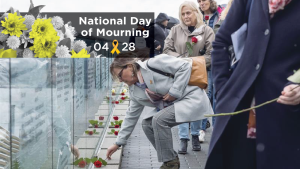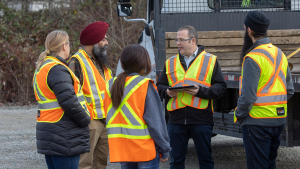What caused a crane in downtown Kelowna to collapse and kill five people?
That is the question facing WorkSafeBC investigators as they go over the evidence following the July tragedy.
“Owners, prime contractors and employers are ultimately responsible for the safety of workers at their worksites,” reads a release from the regulator.
WorkSafeBC is currently analyzing the site and the crane equipment involved. They are interviewing workers, witnesses and managers. Relevant documents like equipment operation manuals, written procedures and training records are being collected and reviewed.
When the process is done an incident investigation report will be compiled.
But how WorkSafeBC conducts investigations has undergone significant changes over the years and this hasn’t been without controversy. Much of the push stemmed from two deadly sawmill explosions.
Two people died and 20 were injured on Jan. 10, 2012 at an explosion at Babine Forest Products in Burns Lake, B.C. and on April 24, 2012 two people died and 22 were injured in an explosion at Lakeland Mills in Prince George, B.C.
When it came time to recommend criminal charges, the Crown declined for both cases. Prosecutors explained a conviction would be unlikely because WorkSafeBC had botched its investigation by not following criminal investigation rules. A large amount of evidence wasn’t usable.
The fallout resulted in two major reports that dug into what happened and what should be done to prevent a similar failure.
The Dyble Report and the Macatee Report made many recommendations, including improving interaction between investigating and prosecuting agencies, enhanced training, improving the working relationship between the Criminal Justice Branch and WorkSafeBC, and implementing a two-team investigative system. All the recommendations were accepted and implemented.
Vancouver lawyer Lisa Helps was then asked to review the implementation of the changes and assess how well they worked. Her verdict, outlined in her report “Crossing the Rubicon,” was mixed. Most notable was her criticism of the two-team system.
“This model has two teams governed by protocols that limit, and sometimes restrict, the flow of information,” explained Helps in her report. “When a team looking into the cause of an accident finds that there may be grounds to investigate for prosecution, the team suspends their investigation and the second team is introduced.”
The decision to introduce the second team is known as crossing the Rubicon. The teams do not share information and much of the investigation must be repeated using criminal investigation standards.
Helps wrote the model resulted in significant frustration with investigators, team leads and within administration.
“Almost universally, it was agreed that the two team model did not work,” she explained. “The two team model has two sets of investigators, two sets of supervisors and a manager for each team. The positives to this model are a strict separation of information crossover and a simple management structure. However, without communication between the two teams, it is unclear when the Rubicon has been crossed. There is a lack of flexibility to respond to multiple incidents and limited and inefficient communication between the quasi-criminal team and the police.”
She believed the teams should be restructured into one with both compliance and quasi-criminal investigators who are empowered to make independent decisions about charge approval submission. Helps said this would make investigations faster, more comprehensive and more likely to proceed to prosecution.
WorkSafeBC now operates under a one-team model as recommended in the Helps’ report. They have also added a prosecution team to conduct prosecutorial investigations into workplace incidents.
Follow the author on Twitter @RussellReports.











Recent Comments
comments for this post are closed